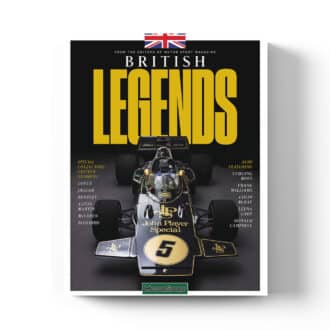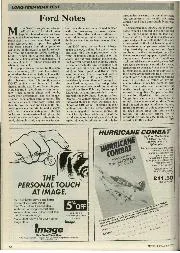
Long-Term Road Test - Ford Sierra EFi XR4 x 4
Ford Notes Motor Sport's long-term test-car, my Ford Sierra EFi XR4 x 4 (not a Sapphire booted saloon as illustrated in the January issue, but a five-door Hatchback) has now…
When you’re staying in a B&B, it’s the last letter that makes all the difference. Few people in their right mind would turn down a good guesthouse breakfast, but when you’re about to be hurled through Wales in a rally car — while reading pace notes —skipping the sausage and eggs is a wise option.
It may be the only sensible decision I’ve made so far, on this trip to Llandudno where I’m about to begin my first ever stint as a rally navigator, in the heat of competition.
This is not just any competition either. My baptism of forest stages will be in the biggest rallying event of the year: Wales Rally GB. It’s the sort of day you start with an empty stomach and a strong coffee.
As Motor Sport’s digital editor, I spend most of my days in front of a screen and barely qualify to watch from the sidelines, yet, here I was on the first weekend of October, signing on to compete at the same desk as Sébastien Ogier, Kris Meeke and Ott Tänak in Llandudno’s seafront theatre.
Keen tennis players couldn’t dream of playing in front of a packed centre court crowd, neither can a pub football team book Wembley for a kickaround. But, for one weekend of the year, amateur rally drivers can compete in the same event, on the same stages as the greatest drivers in the world.
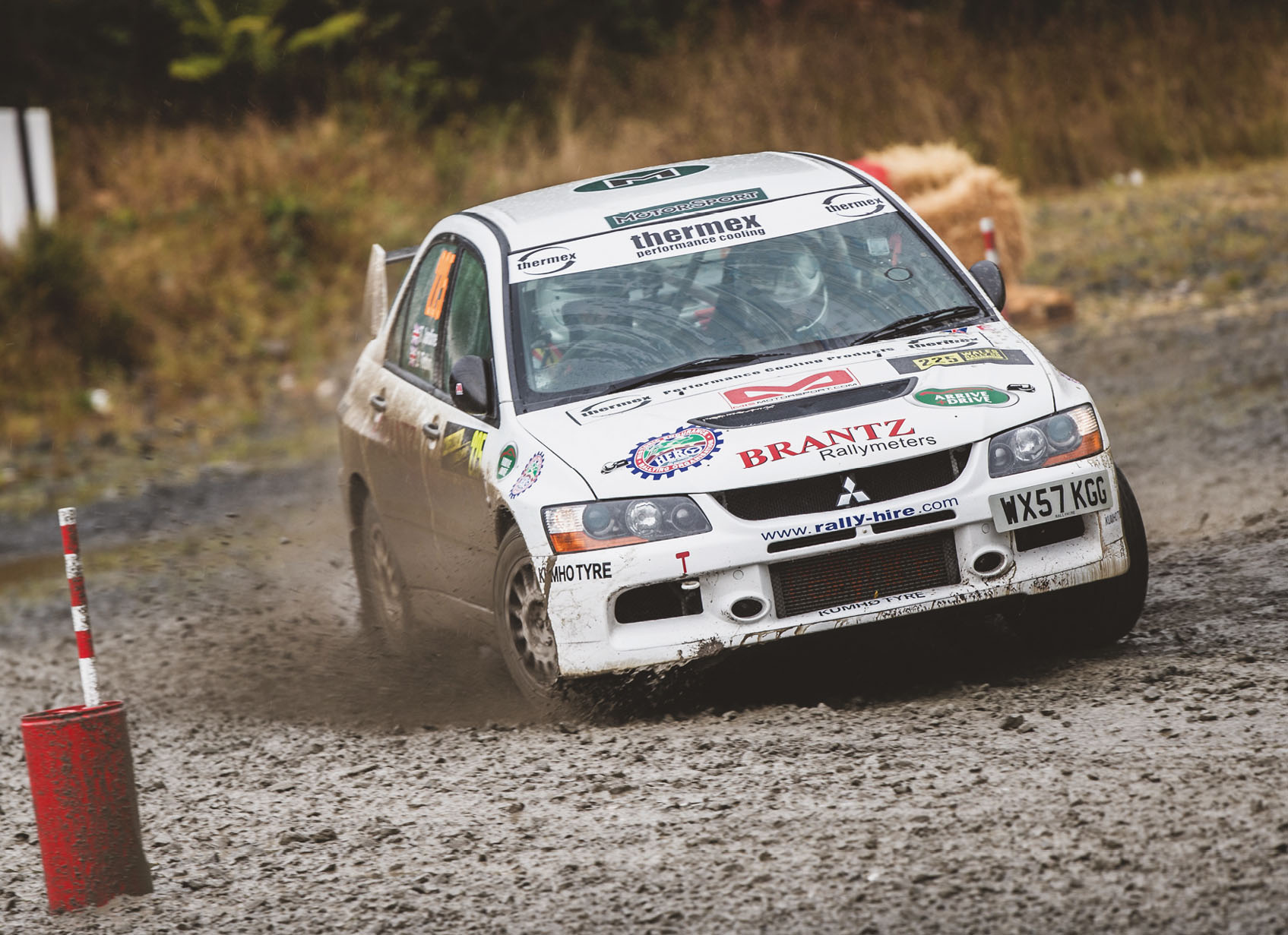
While the full World Rally Championship round gets most of the attention, organisers also run the National Rally over the same weekend, with the stages often running between WRC runs, in front of banks of enthusiastic spectators.
It’s quite a spectacle too; dominated by amateur drivers in cars from previous generations. This year’s line-up of 64 teams included a Talbot Sunbeam, a Vauxhall Chevette and Lancia Delta Integrale, as well as more than a dozen Subaru Imprezas. Oh, and Jimmy McRae, father to Colin and Alister, in an historic Porsche 911 RS.
Crucially, co-drivers needed no experience, so I applied for my basic licence (no test or medical needed) and headed to Wales, all set to navigate on stages where 100mph straights can be followed by blind hairpins: mistakes can be very costly indeed.
Fortunately, as Motor Sport readers will know, this is not a novel concept. Denis Jenkinson, our legendary Continental Correspondent, and Stirling Moss practically invented the concept of the co-driver in 1955.
The pair’s meticulous homework, identifying the hazards and bends on that year’s Mille Miglia course and classifying them as “saucy ones”, “dodgy ones” and “very dangerous ones” gave Moss the confidence to complete the course at record pace and claim an historic victory.
As with the famous 1955 race, I was joined by a driver with considerable experience behind the wheel. Tony Jardine is best known from his stint as an F1 commentator, but is handy when it comes to rallying: this would be his 27th Wales Rally GB, having previously earned a class victory.
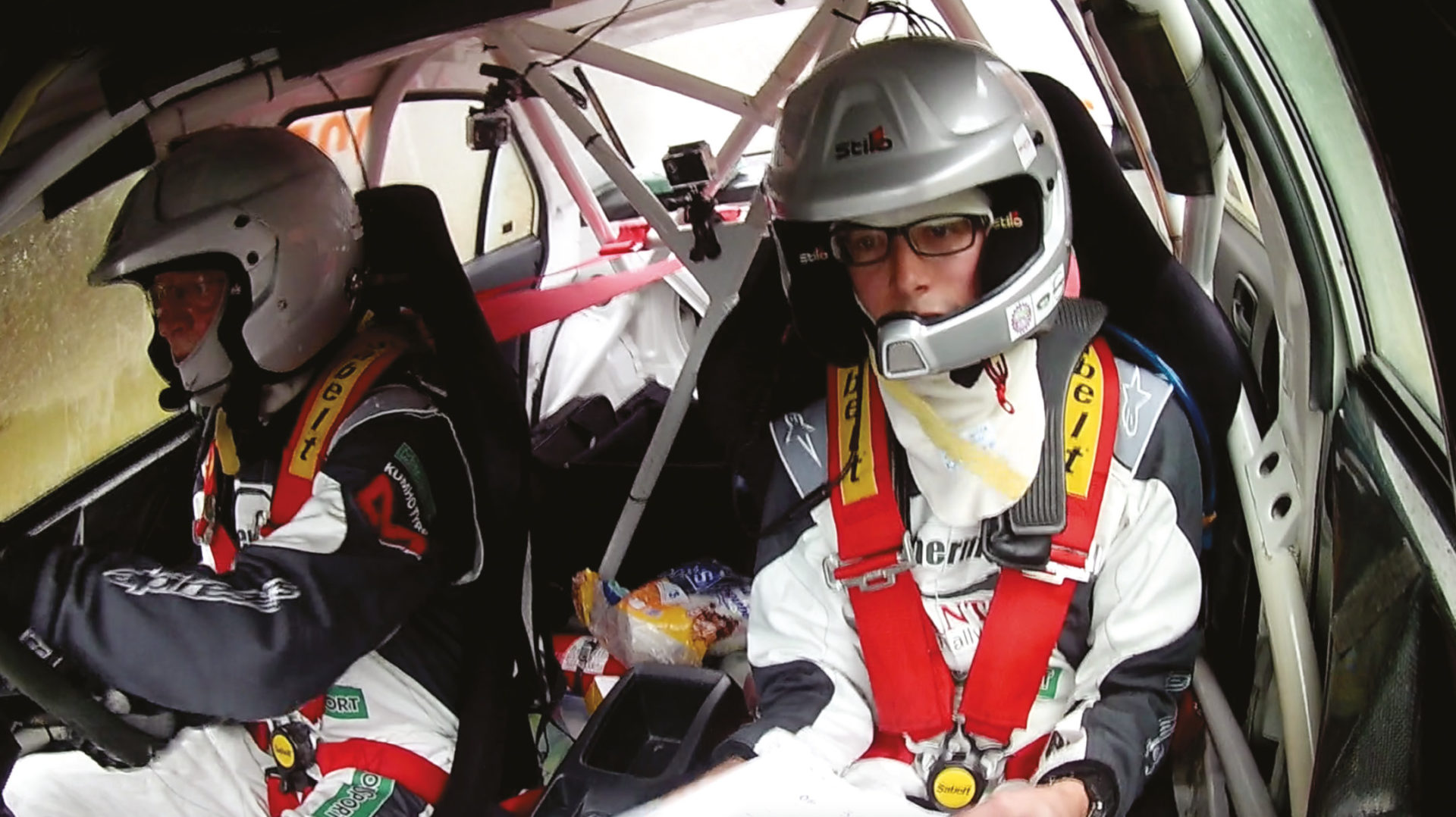
While Jardine and Tobin didn’t quite have the ring of Moss and Jenks, our pairing did have something else in common; just like Moss, Tony hasn’t won an F1 World Championship either.
Our challenger would be a true thoroughbred: a Mitsubishi Lancer Evo IX, hired from the Belfast-based RallyHire at the cost of £3000 a day.
Originally a production car that was as standard as Evos come, this had been stripped back by the company owner, Raymond Mason, and kitted out with the essentials to survive a pummelling over gravel, rocks and mud: roll cage, uprated suspension, anti-lag software, plus a foot-mounted horn for the co-driver – used to warn over-adventurous spectators.
However, all of this is going nowhere without the two crucial books in my hands: the first contains the pace notes, familiar to anyone who’s watched coverage of a rally.
There’s not a saucy corner in sight, as our pre-prepared notes rate the fastest corners as ‘6’ and some of the slowest as ‘1’. I simply have to read them out at the right time: I see 6L and say “6 Left”. That’s the easy part; delivering them at the right time is what will prove to be the test.
A “>” means that corner tightens, “DC” means Don’t Cut and, most arrestingly, “!!!” is Big Danger. One not to forget.
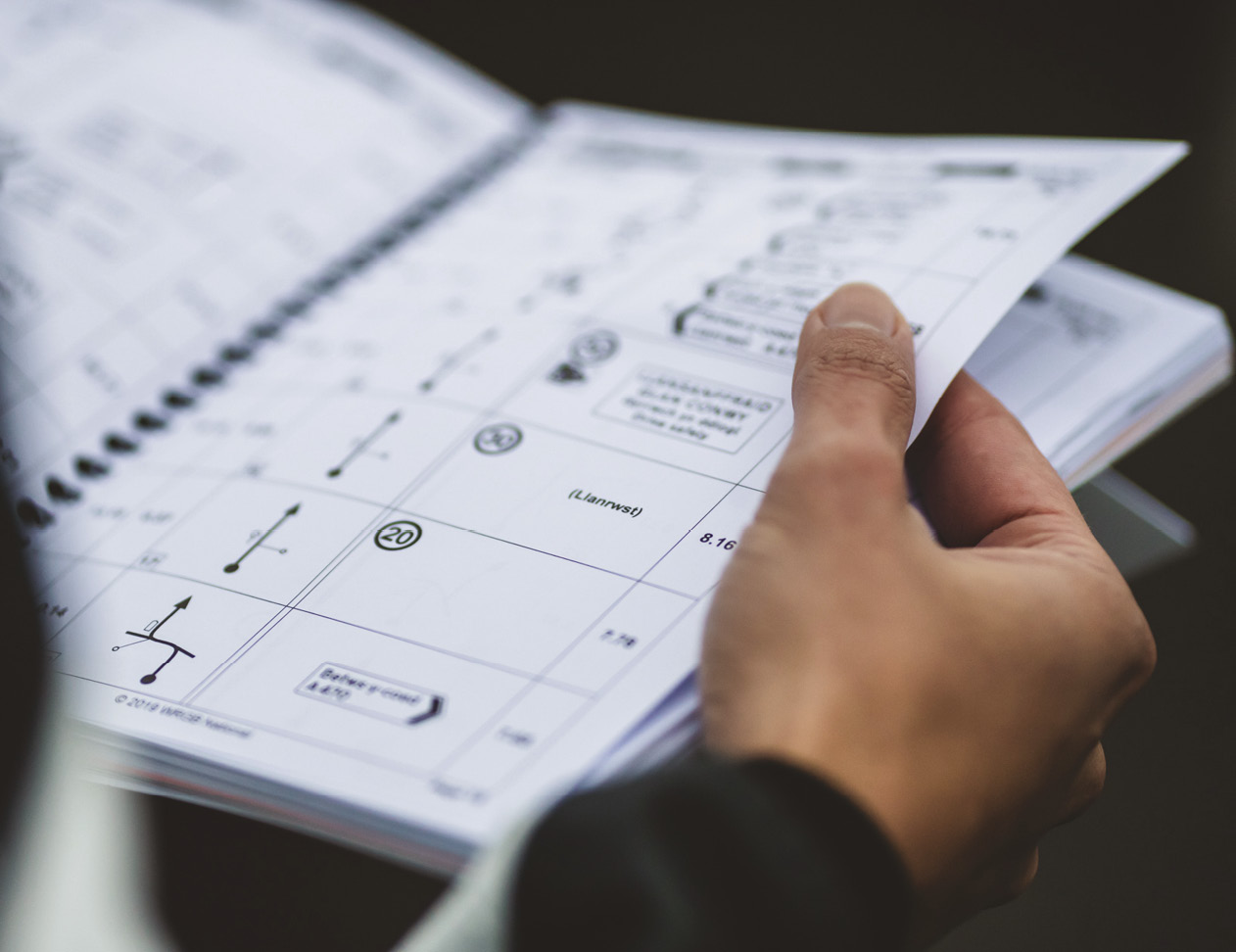
The notes tell the story of an exhilarating rally with snaking stages, jumps and watersplashes. The second book less so. Its 149 pages are mainly filled with road junction illustrations to get between stages.
It’s archaic in the era of GPS sat-nav, but obligatory to use. This is ironically enforced on WRC cars by using GPS tracking to ensure that they don’t hunt out a quicker route.
“Navigation is the most important part of co-driving,” says Dan Barritt, who won Wales Rally GB with Elfyn Evans in 2017, and assisted with my event preparation. “The driver can still make it through the stages without pace notes but if you’ve not first navigated them from A to B then they aren’t even going to start. People understand that co-drivers read notes but most of the work is much less exciting. You spend 80 per cent of the day on the mundane part of navigating. The fun bit is only a small part of the rally.”
Perhaps the WRC is missing a trick by not televising Kris Meeke missing the turn-off at Conwy, or Petter Solberg mistakenly turning into Zip World at Betws-y-Coed, but for now, viewers don’t see the hours of public road driving, the constant resetting of the rallymeter odometer, and incessant time checking to ensure that you’re not at risk of being late.
In rallying, punctuality remains next to godliness so if you don’t make it to the numerous time controls at the precise minute required, you’ll find a time penalty being added to your stage results.
Combined with the joys of British motoring, this can make driving between stages highly stressful, as you wait in a queue at temporary traffic lights, get delayed by a tractor on narrow country roads, or dawdle behind a driver who appears to have inadvertently set their speed limiter to 30mph… everywhere.
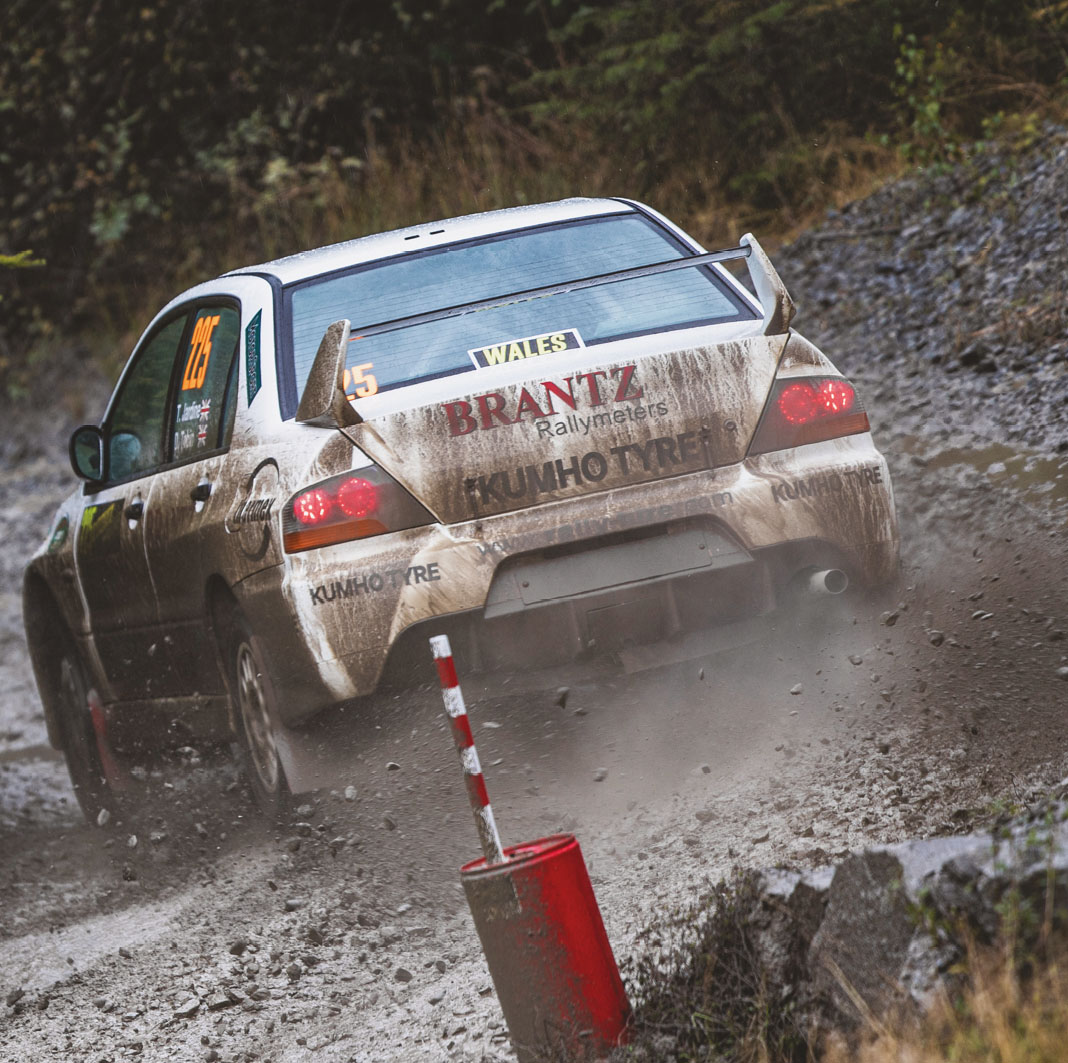
Arriving late incurs a penalty of 10 seconds for every minute’s delay, but arriving early is even more heinous: a minute is added on to your stage time for every minute ahead of time; it helps to have a watch that’s not running too fast or slow.
So drivers aim to get there ahead of time and then park at the side of the road until they are due at the control booth, and you’ll typically find a row of competitors waiting before each stage. These minutes ahead of the stage are sociable, with chatter about car damage and course quality. McRae’s Porsche is just ahead. He raises his eyebrows when I say it’s my first rally then checks his watch against mine to make sure they are in sync with official ‘rally time’.
Further up the road is Wug Utting, competing in his 15th Wales Rally GB. “There’s something about going sideways on gravel,” he says. “You can’t beat it. We’re here for the quality of the stages and the atmosphere of the event.”
Minutes later, we’re at the start of the first stage at Elsi. I slide my road book into the pocket at the side of my seat, pull out the pace notes and watch the screen ahead counting down to zero.
With 10 seconds to go, Jardine flicks the anti-lag switch and the exhaust crackles. The screen goes green and we’re off.
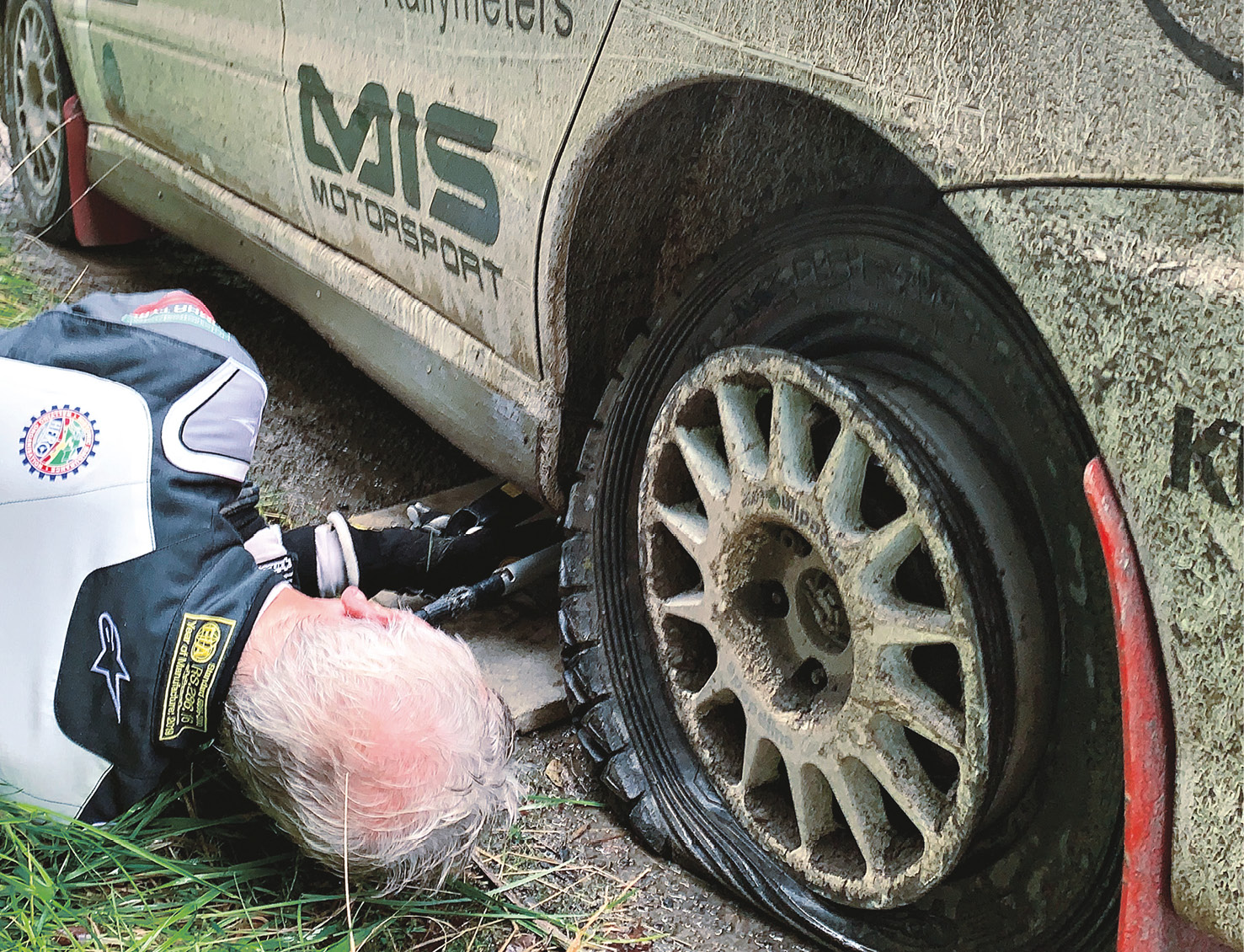
“Three left, 40, One left long. Tight!” I shout over the intercom to overcome the din of gravel being fired up into the wheelarches.
The road jinks right and then left: was that the 6 right and 6 left, or the straight? I read out the next set of directions. But the corners don’t match what I’m shouting. “Er, lost”, I say sheepishly.
Jardine said this would happen. He carries on – cautiously – and we scan for one of the regular junction posts ahead. I find the mark in the book and we’re back off at speed. It’s wet; pouring down, and the already muddy stages are treacherous. They’ve already caught out drivers ahead of us, and we pass cars in ditches and with crumpled bodywork, creating new chicanes on the stages. It could be Jardine’s experience, or his extreme caution at my novice pace note delivery, but we survive the stage: a triumph on the day. Then it’s straight onto the road towards the next.
“The driver and co-driver have to work as a team,” says Barritt. “You need to deliver the pace notes exactly when the driver needs them and giving them plenty of warning without overloading them with information.
“‘Four Left!’ I shout as we hurtle towards a tight right-hander..”
“Getting the right rhythm for the notes is crucial. The driver can’t get the confidence to take risks or to trust what’s coming up unless you and the driver are in sync.”
“Four Left” I shout confidently as we hurtle towards a tight right-hander on the second stage over a tricky Penmachno course. “Slow into hairpin left,” I add, as the road opens up. Jardine simply ignores me as he speeds up the hill. “We’ll look for the next junction,” he says through what sounds like gritted teeth.
We spot junction 18, but that’s on the previous page: I’ve made another rookie error, turned two pages and directed Jardine to drive straight into a tree. Then it gets worse as the back of the car starts sliding… on a straight. We’ve obviously got a puncture and with around 20 corners to go, we avoid stopping on the stage and limp to the end.
The left-rear tyre is shredded and the clock is ticking relentlessly, with penalties looming if we don’t make it to the next stage on time. Tony lies in the sticky mud and jacks up the car, while I push the wheel gun through the clogged mud to loosen the nuts.
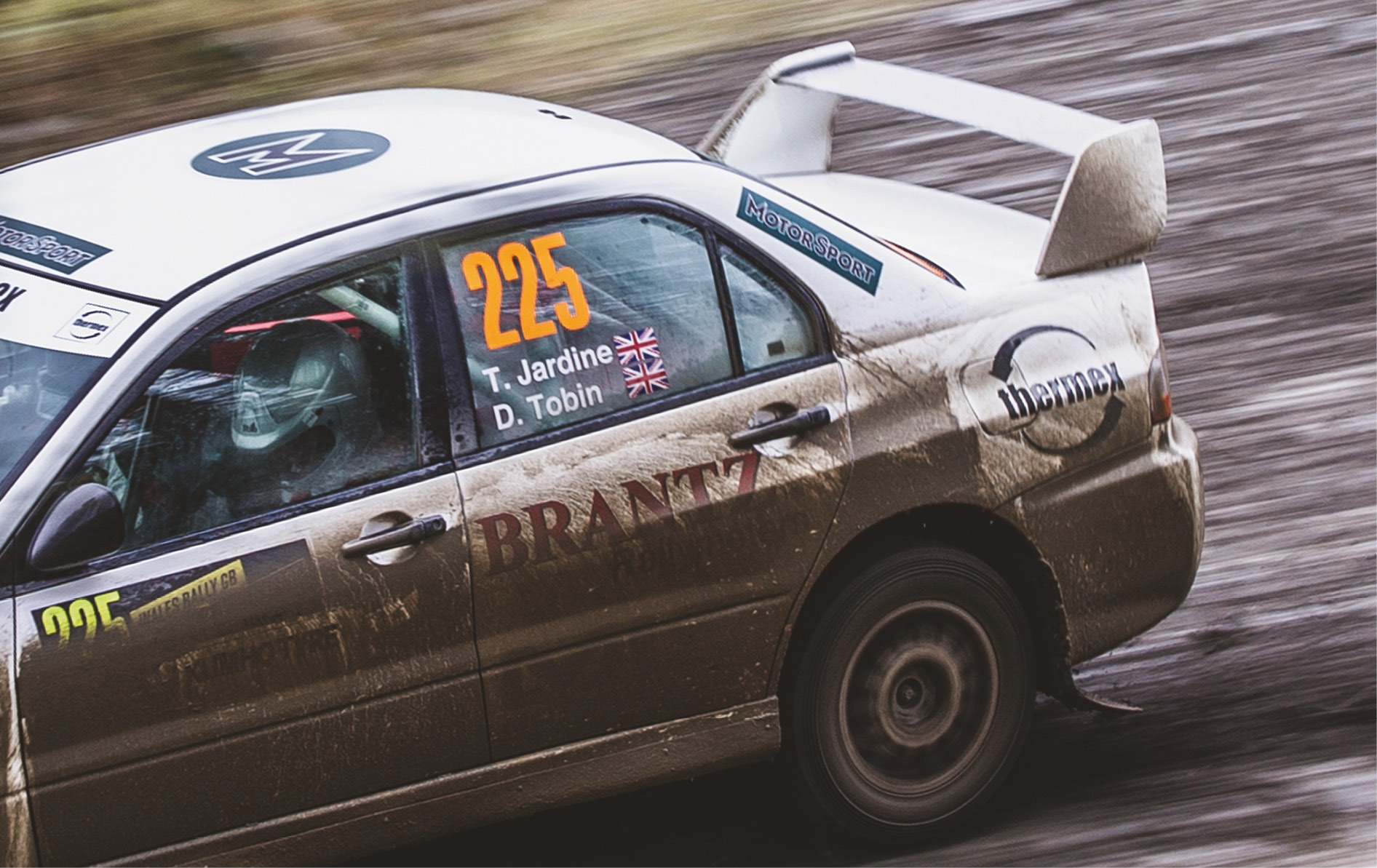
With a spare in the boot, we’re back and running – our pristine white overalls now a soiled shade of brown – in four minutes: respectable if you’re not a professional.
Tony’s shaking his head furiously as I explain the tight schedule. “It was a hairpin,” he says. “I was pushing too hard and we slid out onto the stones – that’s where we got the puncture.”
I’m fairly sure that he’s talking about a corner that came up when I was lost in my notes, so he was effectively driving blind. I stay quiet.
We get to the next time control with barely two minutes to spare and there’s no respite, as we’re back in action straight away, roaring through the spectator-filled forests with, thankfully, no pace note errors and no punctures.
We head back to Llandudno and we’re ninth. Even more unbelievably, the white plastic sick bag under my seat remains untouched. Even Jenks struggled to read while being thrown around the roads of Italy. “My poor stomach was beginning to suffer,” he wrote. “It cried ‘enough’ and what little breakfast I had eaten suddenly went overboard.”
Somehow, my stomach had not even registered a complaint. The next day would be fuelled by a full English.
It would have to be full throttle too, with a top-10 finish our target. And there was added incentive to perform well, as the spectators were out in force. With a wall of mobile phones, this was not the day to make a silly mistake.
The three stages of the final day were stunning to drive: long stretches of gravel, with technical turns, jumps and chicanes. If you get into a rhythm here, there are big chunks of time to gain. The opposite scenario would destroy our hopes of a strong result.
We were still in contention when we reached the final stage at Sweet Lamb: a rally testing centre that’s a playground for rally cars. Helmets on, intercom wire plugged in, pace notes ready and straps tightened. I start the countdown.
There’s honestly not a great deal that I remember from the stage. Head down, looking at notes, and glancing at the track to make sure the corners matched my instructions, there was no time to take in the surroundings
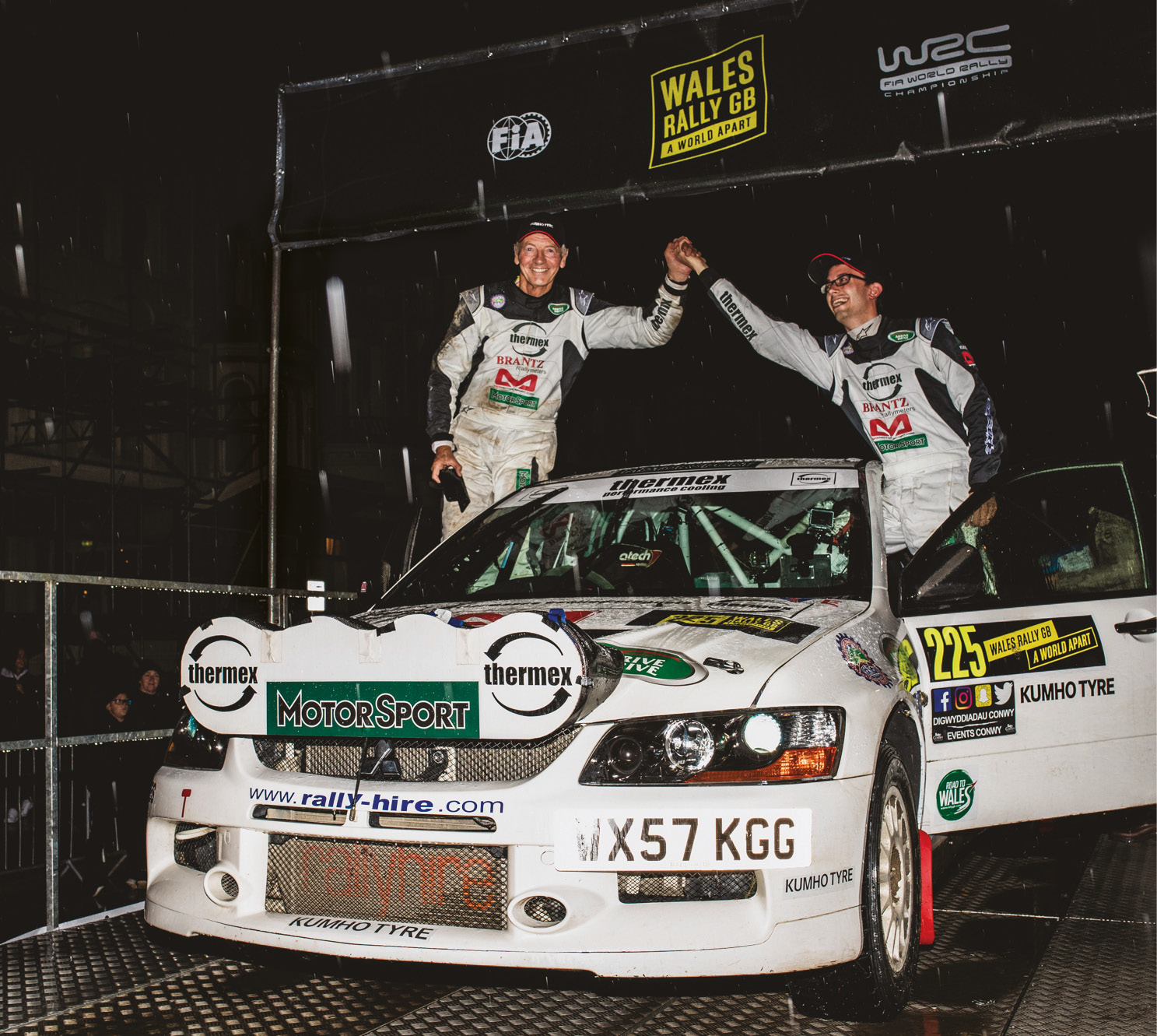
There are blurred memories of sliding past banks of spectators, the snaking paths through forests, quarries and logging routes, and the neck strain that comes from landing a jump while looking down at your notes.
I couldn’t appreciate Jardine’s deft driving but he was definitely doing something right because we were flying. “Caution, acute right” I shouted and felt Jardine hit the brakes as the corner approached. Shimmying through switchbacks and sliding round long, sweeping bends, we completed the final stage in 17 minutes; it felt more like five.
The stages were over, but we still had to make the three-hour drive back to Llandudno, avoid penalties – and visit the official car wash so that the car would look good on the ramp.
The results came in on the way back: sixth out of 45 finishers. We may not have emulated Moss and Jenks, but for Jardine and Tobin, it felt like victory.
Even so, after two days pounding round the mud of Wales it was still obvious that I was new to the game. As we stepped out of the car for our finish ramp picture, I looked in completely the wrong direction for the cameras.



